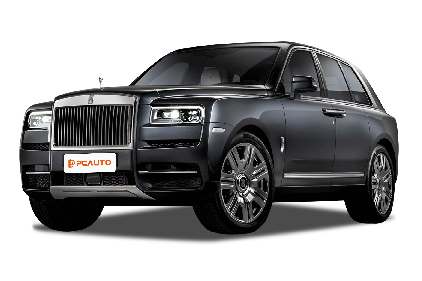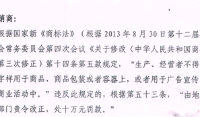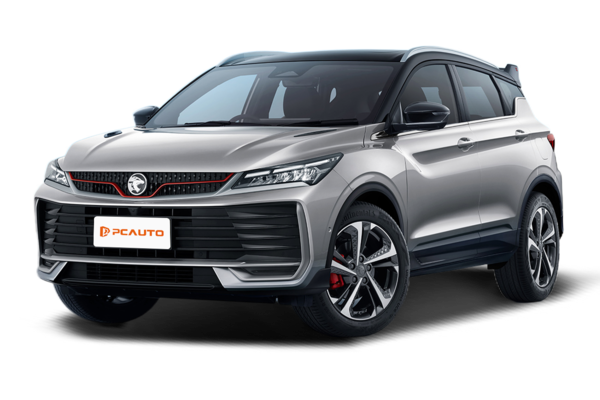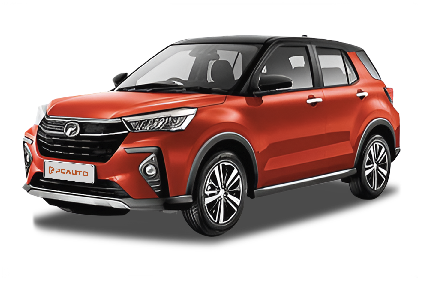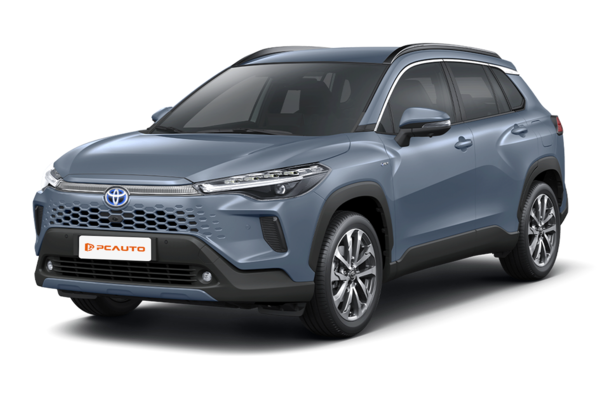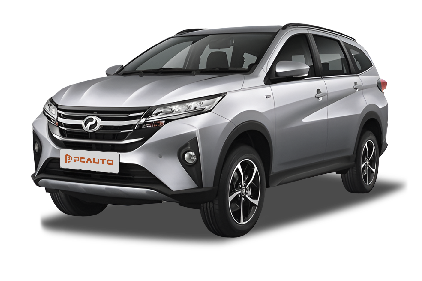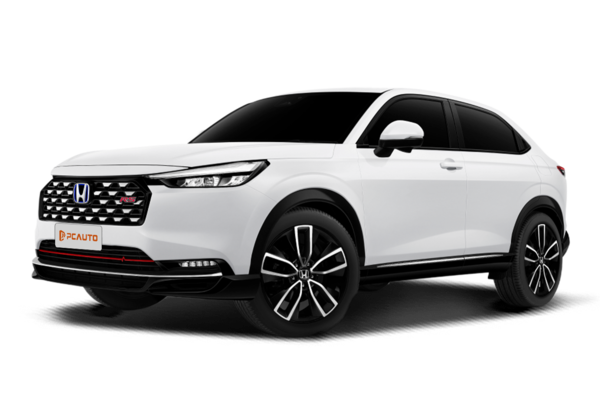Q
Is the 2018 Rolls-Royce Phantom reliable?
The 2018 Rolls-Royce Phantom, as a top-tier luxury sedan, stands out with exceptional reliability in its class. Thanks to Rolls-Royce's meticulous craftsmanship and stringent quality control, the powertrain, chassis, and electronics undergo rigorous testing to ensure long-term stability. Especially in Malaysia's hot and rainy climate, its body rust-proofing and air conditioning system are optimized for high-temperature environments, further enhancing durability. While maintenance costs for the Phantom are on the higher side, regular servicing at authorized centers effectively prevents potential issues. Rolls-Royce's after-sales service, including global warranty and roadside assistance, adds an extra layer of security for owners. For Malaysian consumers, when buying a luxury car, local road conditions and fuel quality should also be considered. It's advisable to choose official import channels to ensure vehicle adaptability. Additionally, the Phantom's customization options allow owners to tailor configurations to personal preferences, which is one of its unique selling points. Overall, the 2018 Phantom excels in both reliability and luxury experience, making it ideal for buyers seeking the ultimate in quality.
Q
Is the Phantom considered a luxury car?
The Rolls-Royce Phantom is undoubtedly a top-tier luxury car, representing the pinnacle of automotive craftsmanship. Renowned worldwide for its exquisite hand-built construction, ultimate comfort, and unparalleled brand heritage, the Phantom stands as a true icon of opulence. Here in the Malaysian market, it's more than just a car—it's a powerful symbol of status and prestige, highly coveted by discerning high-end consumers.
From its signature coach doors that open gracefully to the lavish interior adorned with premium leather and rich wood veneers, every detail exudes luxury. Add to that the highly personalized customization options, and the Phantom perfectly embodies what "ultra-luxury" truly means. It's also worth noting that Malaysia's hot and rainy climate can be tough on vehicles, but the Phantom's top-shelf materials and precision Craftsmanship ensure it holds up exceptionally well in local conditions, maintaining its allure through the years.
Sure, there are rivals like the Bentley Mulsanne and Mercedes-Maybach S-Class in the same league, but the Phantom still holds a unique edge when it comes to brand prestige and the depth of handcrafted customization it offers. For Malaysian buyers who demand nothing but the absolute best in luxury, the Phantom is undoubtedly the crowning choice at the very top of the pyramid.
Q
Which is better, Phantom or Ghost?
Both the Rolls-Royce Phantom and Ghost are pinnacle luxury sedans, but they carve out distinct niches in terms of positioning and character. The Phantom, as the brand's flagship, stretches longer and places the utmost emphasis on that plush rear-seat experience – it's tailor-made for buyers chasing the absolute pinnacle of prestige. That iconic coach door design and handcrafted interior? Pure, unadulterated top-tier craftsmanship. The Ghost, on the other hand, is a touch more compact but leans harder into the driving dynamics. Its powertrain's tuned with a bit more verve, though it never sacrifices that quintessential Rolls-Royce ride comfort. It's the one for the owner who actually enjoys getting behind the wheel themselves.
For Malaysian customers, both handle local roads admirably, but the Phantom's extended wheelbase might feel a bit cumbersome on tighter lanes. The Ghost's nimbleness makes it the more city-friendly companion in that regard. Notably, both share that sonorous 6.75-liter V12 heart, but the Ghost adds a 48V mild-hybrid system to eke out better fuel efficiency – a definite plus given Malaysia's not-so-friendly fuel prices. When it comes to options, the Phantom opens the door to几乎 limitless personalization, while the Ghost's offerings are a touch more standardized, though still far from basic.
At the end of the day, it all boils down to what you're after. If it's about making an uncompromising statement of luxury and nailing those business reception, the Phantom reigns supreme. But if driving engagement and everyday usability are higher on your list, the Ghost is the smarter choice.
Q
How much is the 2018 Phantom?
The 2018 Rolls-Royce Phantom's price tag in Malaysia can vary quite a bit depending on the spec, optional extras, and all the taxes involved. Brand-new, you're typically looking at somewhere between 4 million to 5 million Ringgit, but that really hinges on the dealer's quote and how bespoke you want your ride to be. For used models, the price fluctuates based on condition, mileage, and service history, usually landing in the 2.5 million to 3.5 million Ringgit ballpark.
As Rolls-Royce's flagship, the Phantom is famous for its handcrafted interior, that smooth 6.75-liter V12 engine, and the iconic "Magic Carpet" suspension system—total overkill in the best way for folks who demand the absolute pinnacle of luxury and comfort. Over here in Malaysia, these ultra-luxury machines get hit with pretty steep import duties and consumption taxes, so you’re definitely paying a premium compared to their home market.
If you’re thinking about picking one up, I’d strongly suggest reaching out to the official dealers for the latest quotes. And if you’re eyeing a used Phantom, make sure to check for a full service history and proper import documentation to guarantee the car’s up to scratch. Also, keep in mind that maintaining a Phantom isn’t cheap—factor in a solid budget for servicing to keep that luxury experience top-notch for the long haul.
Q
What is the top speed of the 2011 Rolls-Royce Ghost?
The 2011 Rolls-Royce Ghost tops out at 250 km/h, a speed capped by an electronic limiter to keep things safely in check – right in line with Rolls-Royce's whole vibe of elegance and comfort. Under the hood, there's a 6.6-litre V12 twin-turbo engine cranking out 563 horsepower and 780 Nm of torque, so the power's definitely there. But let's be real, Rolls-Royce isn't about raw speed; it's all about that silky-smooth driving experience. For drivers in Malaysia, the Ghost's lush interior, killer sound insulation, and fancy suspension setup make it a solid fit for the country's mixed bag of roads. Whether you're stuck in city gridlock or cruising down the highway, this thing serves up top-tier comfort. And here's the kicker: even with all that performance, Rolls-Royce's whole "magic carpet ride" philosophy shines through. So even when you're moving at speed, the cabin stays dead quiet and eerily stable – that's one of the big things that sets Rolls apart from the other ultra-luxury players.
Q
Is the 2011 Rolls-Royce Ghost reliable?
The 2011 Rolls-Royce Ghost holds up pretty well in terms of reliability. As you'd expect from a top-tier luxury brand, the craftsmanship and materials are absolutely top-notch. That 6.6-liter V12 twin-turbo engine under the hood is a tried-and-tested unit—smooth power delivery and built to last. The transmission and chassis tuning are also nicely sorted, making it a good fit for Malaysian roads.
But here's the thing with these luxury rides: maintenance costs can bite. Genuine parts and specialized servicing, in particular, might hit the wallet harder here in Malaysia. My advice? Stick to regular professional check-ups to keep it running like a dream for the long haul.
If you're a Malaysian buyer eyeing a used Ghost, do your homework. Dig into the full service history and vehicle background to steer clear of any hidden surprises. On the upside, these luxury cars tend to hold their value fairly steady in Malaysia, though the exact resale performance will always depend on the specific condition of the car and how the market's moving at the time.
Q
How much is a 2011 Rolls-Royce Ghost worth?
If you're scouring Malaysia's used car scene for a 2011 Rolls-Royce Ghost, you'll likely be looking at prices in the ballpark of RM800k to RM1.2 million. Of course, where exactly it lands in that range hinges on stuff like how the car's been kept, mileage under its belt, service history, and the spec level—top-trim models or those in mint condition can easily push past that upper end.
The Ghost, even as the "entry point" to Rolls-Royce ownership, is all about that signature silent ride, insanely lavish interior, and the buttery-smooth punch of a V12. The 2011 model packs a 6.6-liter twin-turbo unit cranking out 563 horsepower, making it a dream for folks who want luxury and comfort dialed up to 11.
In Malaysia, these ultra-luxury rides tend to hold their value pretty well, but don't sleep on the extra costs—import duties, insurance, and maintenance can add up quick. Smart move? Go through a reputable dealer or get a pro inspection to check the car's past, make sure there's no accident or flood damage in its history. And hey, keeping a Ghost in tip-top shape isn't cheap, but sticking with the original factoory service is key to preserving its value. The local Rolls-Royce authorized center should have you covered for all that pro care.
Q
How much is a 2025 Rolls-Royce convertible?
The official price tag for the 2025 Rolls-Royce convertible hasn't been officially announced yet. But, looking at how the 2024 Rolls-Royce Dawn was priced in the Malaysian market, we're expecting the new drop-top to start north of RM 2 million. Of course, the final figure will dance around a bit depending on how you spec it out, any custom touches you want, and let's not forget those ever-fluctuating exchange rates.
Rolls-Royce, being the pinnacle of luxury, their convertibles are all about handcrafted perfection, that unbeatable ride comfort, and let's not overlook that iconic Starlight Headliner. Under the hood, we're likely looking at the carryover 6.6-litre V12 twin-turbo engine, mated to that smooth 8-speed auto, delivering that effortless, gliding driving experience they're famous for.
For Malaysian buyers, it's not just the sticker price. You've got to factor in import duties, registration fees, and insurance—all those extra bits that add up. Your best bet? Reach out directly to the authorized Rolls-Royce dealer in Kuala Lumpur. They'll hook you up with the latest quotes and walk you through all the bespoke options.
And let's be real, what makes a Rolls a Rolls is the bespoke service. Owners can go wild with custom exterior colors, sumptuous interior materials, even personalized embroidery on the seats. These little (or big) personal touches? They can definitely give the final price a significant nudge upwards.
